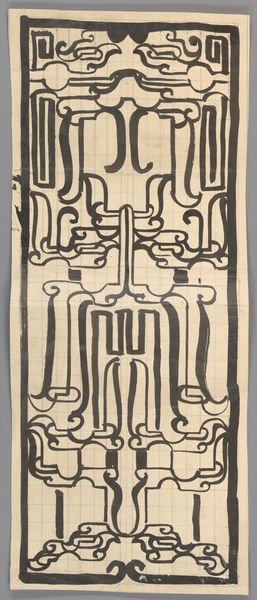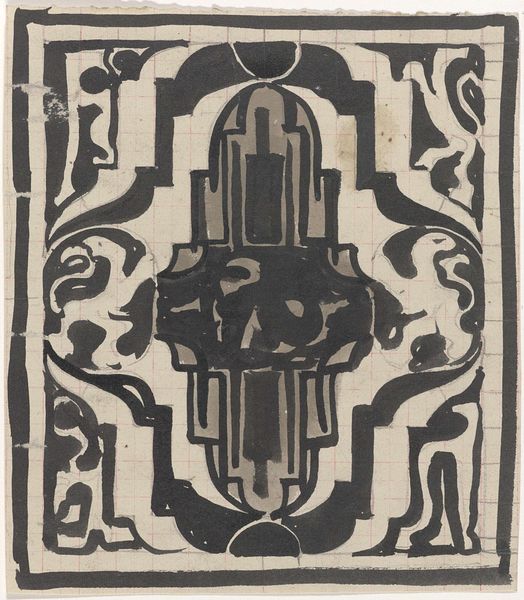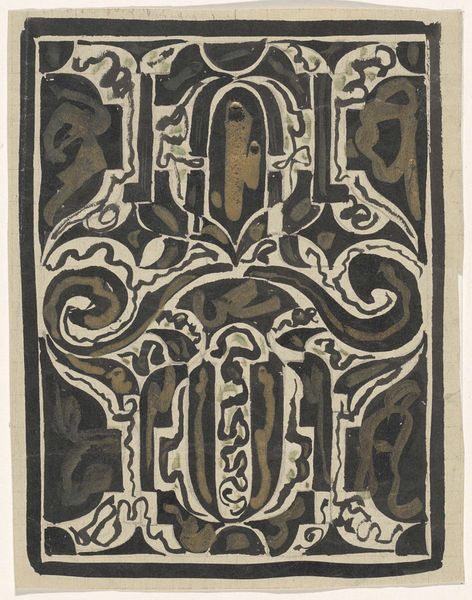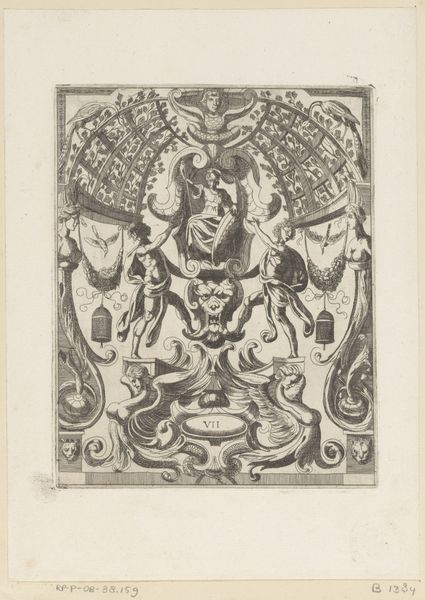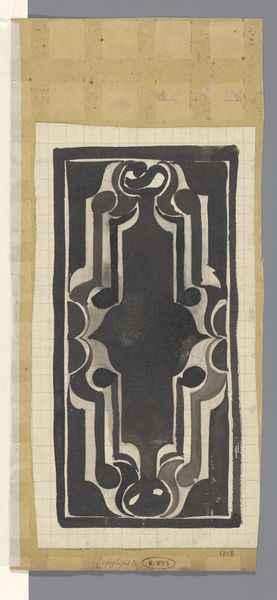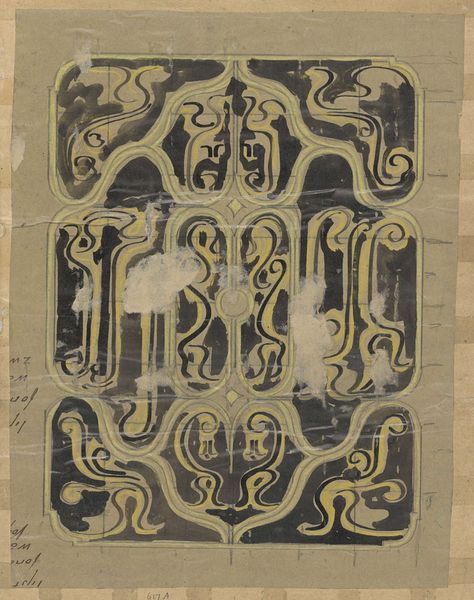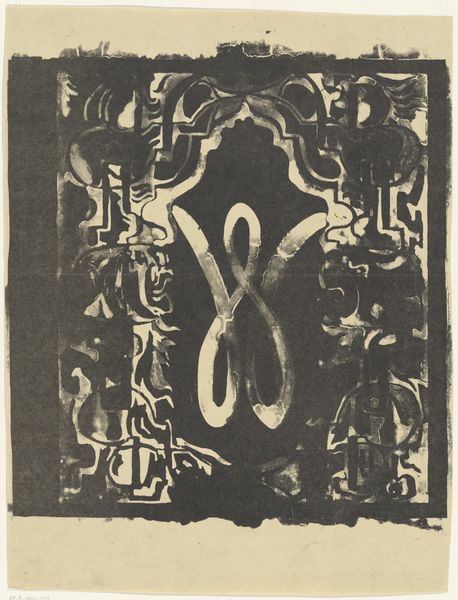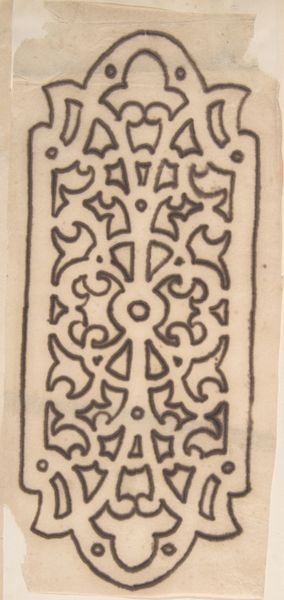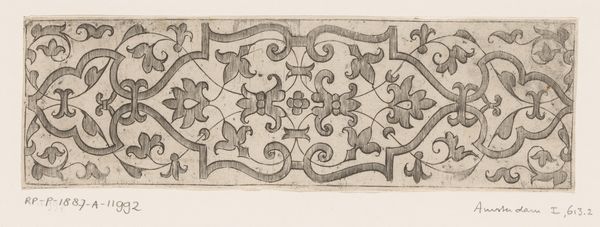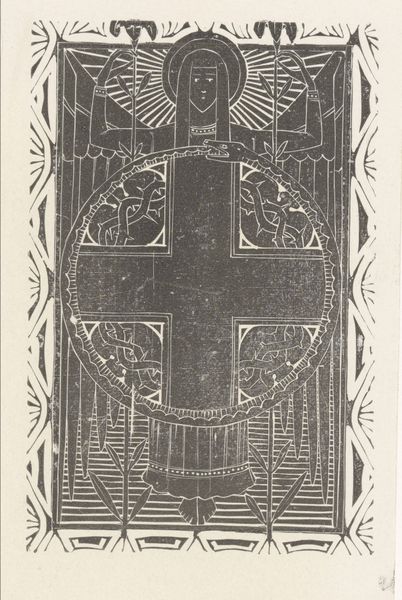
Ontwerp van een vignet (?) voor de Wereldbibliotheek 1874 - 1945
0:00
0:00
drawing, graphic-art, typography, ink
#
drawing
#
graphic-art
#
rippled sketch texture
#
art-nouveau
#
hand drawn type
#
personal sketchbook
#
typography
#
ink
#
geometric
#
pen-ink sketch
#
thin linework
#
line
#
pen work
#
sketchbook drawing
#
decorative-art
#
sketchbook art
#
coloring book page
#
doodle art
Dimensions: height 351 mm, width 263 mm
Copyright: Rijks Museum: Open Domain
Curator: Here we have “Ontwerp van een vignet (?) voor de Wereldbibliotheek”, or "Design of a Vignette (?) for the World Library", by Carel Adolph Lion Cachet, dating from 1874 to 1945. It’s a drawing executed with ink. Editor: It’s strikingly Art Nouveau! All swirling lines and stylized motifs...It gives a sense of refinement. Curator: Absolutely, the design is steeped in that late 19th-century aesthetic, a reaction against industrial production in favor of handcraftsmanship. You see it reflected even in this possible bookplate design. What does this tension say about artistic production at the time? The world was changing due to technological advancements. Editor: It does appear to be a design for a bookplate, specifically, from what I see, for the "World Library." The text incorporated and those linear decorations surrounding the initials would have held powerful meaning. Curator: Meaning is one thing but how was this ink even manufactured? How did people interact with this imagery as an owner or admirer of its art? I want to explore what it means for it to function as an interface between a piece of work and a reader or consumer. Was it bound, stamped or placed in mass-produced books and made accessible or was it carefully constructed with expert technique for unique presentation pieces. What ink or tools were made available? Editor: Very true. It invites speculation. But what a clever, succinct distillation of "world" and "library". Lion Cachet really captures the moment when such organizations aimed to disseminate knowledge widely through appealing designs and, what was even a consideration, what were their intended values? This vignette may be decorative, but I think it’s tied up with public engagement and literacy too. And these artistic projects allow for this access and education. Curator: It’s fascinating to consider both the material processes of creation and its public reception and what materials impacted what consumers thought and had available to them at that point in time! Editor: I concur. It certainly offers some nice food for thought about books, art, and society, then and now.
Comments
No comments
Be the first to comment and join the conversation on the ultimate creative platform.
